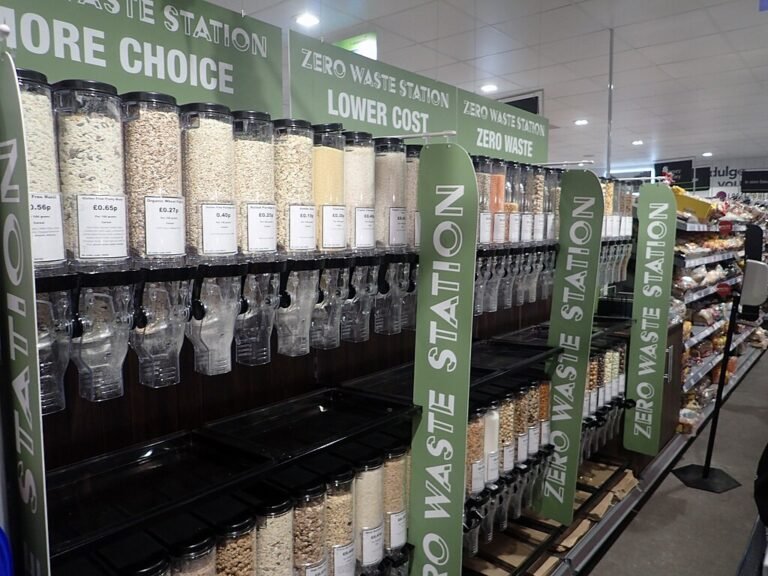What Is Green Loans? Financing a Sustainable Future
Let’s be real — going green sounds great, but it often comes with a hefty price tag. Maybe you’re a small business owner dreaming of solar panels to cut energy bills and shrink your carbon footprint. Or perhaps you’re a homeowner planning to swap out those drafty windows for energy-efficient ones. The biggest hurdle? The cost.
That’s where green loans step in. These aren’t just any loans — they’re designed specifically to help fund projects that benefit the environment, making it easier for people like you to invest in sustainability without breaking the bank.
And it’s not just talk. The world is backing this shift in a big way. According to the Global Sustainable Investment Alliance (2023), sustainable investments hit a staggering $30.3 trillion in 2022 — proof that eco-conscious financing isn’t some niche trend. It’s a global movement.
So, what exactly are green loans, and how do they work? Let’s break it down together — simply, clearly, and without the jargon.

In This Article
- What Exactly Is a Green Loan?
- The Green Loan Principles: Building Trust and Transparency
- Real-World Examples: How Green Loans Are Changing Lives
- Expert Insights: What the Professionals Say
- How to Qualify for a Green Loan
- The Benefits of Green Loans
- Challenges and Considerations
- Actionable Steps: How to Get Started with a Green Loan
- Conclusion
What Exactly Is a Green Loan?
A green loan is simply a loan designed to help people and businesses pay for projects that are good for the environment. Unlike regular loans, green loans have one important rule — the money must be used for something that helps the planet. These loans follow something called the Green Loan Principles (GLP) — a set of guidelines created by the Loan Market Association (LMA) to make sure everything is transparent and accountable. In plain English, this means lenders and borrowers have to be clear about how the money will be used, and there’s a system in place to check that the projects really do benefit the environment.
The key point? If you take out a green loan, you need to show real proof that your project will make a positive environmental impact, like reducing carbon emissions, saving energy, or cutting waste. It’s not just about saying your project is “green” — you have to back it up with facts. This keeps everything honest and impactful.
The Green Loan Principles: Building Trust and Transparency
The Green Loan Principles are built around four simple but powerful ideas:
- Use of Proceeds: The money you borrow must be used for projects that clearly benefit the environment, like installing solar panels, upgrading to energy-efficient windows, or building a rainwater harvesting system. This ensures the loan isn’t just about business growth, but about creating a positive environmental impact.
- Project Evaluation and Selection: You need to show exactly how your project qualifies as “green.” Lenders want to see more than good intentions — they want solid plans and data. For example, if you’re switching to renewable energy, you might need to outline how much carbon emissions you expect to cut each year.
- Management of Proceeds: To keep everything transparent, the loan money should be tracked. Lenders may ask you to place the funds in a separate account or show clear records of how the money is being spent, so it doesn’t accidentally get used for anything that doesn’t serve the environment.
- Reporting: Finally, you need to report back — usually once a year — on how your green project is performing. This could mean sharing energy savings data, waste reduction numbers, or other environmental impact metrics. It’s about proving that the loan is doing what it was meant to do.
These principles help prevent greenwashing, where companies pretend to be eco-friendly without real action. By following the Green Loan Principles, both borrowers and lenders build trust, protect the planet, and move the world closer to a sustainable future.
Real-World Examples: How Green Loans Are Changing Lives
Case Study 1: Powering the Future with Renewable Energy
In March 2025, Adani Green Energy, one of India’s largest renewable energy companies, secured $1.06 billion to refinance a major solar and wind energy project in Rajasthan. This funding ensures the continued expansion of clean energy infrastructure, helping India meet its renewable energy goals while supplying millions with sustainable power.
Case Study 2: Helping Farmers Thrive Sustainably
For many small and medium-sized farmers across Europe, shifting to sustainable agriculture isn’t just a choice—it’s a necessity. But it’s also expensive. That’s where HeavyFinance, a Lithuanian climate technology company, comes in. Between 2020 and 2023, the company facilitated over €27 million in green loans, allowing farmers to implement regenerative practices like no-till farming and mixed crop rotation, both of which improve soil health and store carbon.
Peter Nowak, a Polish farmer who took advantage of a green loan, shared:
“At first, I wasn’t sure if this would work for my farm. But after switching to regenerative practices, my soil is healthier, my crops are thriving, and I know I’m doing my part for the planet.”
Case Study 3: Corporate Sustainability That Pays Off
Back in 2017, Unibail-Rodamco-Westfield made history by securing a €650 million green loan, the world’s first ‘sustainability-linked loan’. The catch? Interest rates were tied directly to the company’s environmental, social, and governance (ESG) performance. This meant the better their sustainability efforts, the lower their interest rates.
Similarly, Royal Philips secured a €1 billion green loan, with financing terms linked to its sustainability performance as assessed by Sustainalytics. These loans prove that sustainability and financial success can go hand in hand—a shift that continues to inspire businesses today.
Case Study 4: Helping Homeowners Save Money & Energy
Sustainability isn’t just for big businesses—it’s for everyday people, too. In Australia, the Clean Energy Finance Corporation (CEFC) has allocated over $1 billion to fund household energy efficiency upgrades. Through a $50 million partnership with Bank Australia, homeowners can access green loans for solar panels, home batteries, and other energy-saving improvements.
For people like Lisa Mitchell, a mother of two in Melbourne, this initiative has been life-changing.
“Before, our energy bills were through the roof. But thanks to a green loan, we installed solar panels, and now we’re saving nearly 50% on electricity. Plus, it feels amazing knowing our home runs on clean energy.”
Expert Insights: What the Professionals Say
Marilyn Waite, Managing Director of the Climate Finance Fund and a leading expert in sustainable finance, explains, “Green loans are more than just a financing tool—they are a catalyst for systemic change. By integrating sustainability into lending, we not only support responsible businesses but also accelerate the global transition to a low-carbon economy.”
Mary Schapiro, former Chair of the U.S. Securities and Exchange Commission (SEC) and Vice Chair of the Glasgow Financial Alliance for Net Zero (GFANZ), adds, “The financial sector plays a critical role in addressing climate change. Green financing solutions, including loans, provide businesses with the means to align their operations with sustainability goals while ensuring transparency and accountability.”
The Growing Popularity of Green Loans: Statistics and Trends
The green loan market has exploded in recent years. Here’s a snapshot of global trends:
| Year | Global Green Loan Issuance (USD) | Annual Growth Rate (%) |
|---|---|---|
| 2020 | $84 billion | — |
| 2021 | $156 billion | 85.7% |
| 2022 | $230 billion | 47.4% |
| 2023 | $310 billion | 34.8% |
Source: BloombergNEF, 2024
This growth reflects rising corporate responsibility, investor demand for sustainable portfolios, and government incentives.
How to Qualify for a Green Loan
Securing a green loan isn’t as simple as applying for a personal loan — it requires preparation and proof. Here’s how you can boost your chances:
1. Define Your Green Project
Start by being crystal clear about what your project is and how it benefits the environment. Banks won’t hand over money just because you say you want to “be more eco-friendly” — they need specifics. Are you investing in renewable energy for your home? Upgrading your business with energy-efficient lighting and insulation? Or perhaps transitioning to electric delivery vehicles for your company?
For example:
- Homeowners might apply for a green loan to install solar panels, energy-efficient windows, or rainwater harvesting systems.
- Small businesses could use the funds to adopt renewable energy, install electric vehicle charging stations, or implement waste reduction programs.
- Farmers may seek loans for eco-friendly irrigation systems or organic farming techniques.
The more specific you are about the environmental impact, the stronger your application.
2. Provide Documentation
Once your project is clear, gather the evidence. Lenders will want to see hard data—expected energy savings, carbon emissions reductions, or waste minimisation plans. This might mean obtaining quotes from energy providers, conducting energy audits, or consulting expert reports.
For example, if you’re investing in a renewable energy system, provide a breakdown of your projected annual savings. If it’s an energy-efficient upgrade for your business, demonstrate how much less electricity you’ll use.
3. Choose a Certified Lender
Not all banks offer green loans, so research lenders who follow the Green Loan Principles. These banks are committed to sustainable financing and will understand your project’s goals.
Look for banks with a solid track record in green financing — many proudly display their eco-credentials on their websites. Ask questions about their green loan process, and make sure they offer transparency about how they evaluate eco-projects.
4. Monitor and Report
Finally, be prepared to track and report your project’s progress. Lenders often require proof that the funds are being used as intended and producing the expected environmental benefits.
This doesn’t have to be overwhelming—it could be as simple as comparing energy bills before and after efficiency upgrades or documenting reductions in waste. The goal is accountability, ensuring the loan genuinely contributes to sustainability.
The Benefits of Green Loans
Here’s why more businesses and individuals are choosing green financing to fund their eco-friendly projects:
Lower Interest Rates
One of the biggest perks of green loans is that many lenders offer lower interest rates compared to traditional loans. Why? Because banks and financial institutions want to encourage sustainability. By making green projects more affordable, they’re helping build a cleaner future while saving you money on repayments.
Boost Your Reputation
Whether you’re a business owner or a homeowner, committing to sustainability sets you apart. For businesses, it strengthens the brand image and attracts eco-conscious customers. For homeowners, it increases property value and shows you care about energy efficiency. A green loan isn’t just financing—it’s a statement about your values.
Long-Term Savings
Investing in energy-efficient solutions often leads to lower utility bills. That means you’ll be saving money year after year. The initial investment pays off in reduced operational costs and increased efficiency.
Access to Incentives
Many governments offer tax breaks, grants, or rebates for green projects. A green loan can help you qualify for these benefits, making your investment even more cost-effective.
Challenges and Considerations
1. Longer Approval Process
Unlike a regular loan, where you might get approval in days, green loans take longer. Why? Because banks need proof that your project is actually good for the environment. That means paperwork, environmental impact reports, and sometimes waiting weeks or even months for approval. It’s worth it—but patience is key.
2. Market and Regulatory Risks
Sustainability rules are always changing. Governments may introduce new policies that affect green projects, or banks might tighten their lending criteria. If you take out a green loan today, there’s always a chance that future regulations could impact your project’s costs or benefits. Keeping up with changes is important.
3. Requirement for Specialised Knowledge
Not everyone is an expert in renewable energy or carbon reduction. But to qualify for a green loan, you’ll need to understand—and explain—how your project helps the environment. That might mean hiring an expert or spending time researching, which can be overwhelming for small businesses or homeowners.
4. Limited Flexibility in Fund Usage
With a regular loan, you can use the money as needed. Green loans don’t work that way. Every dollar must go toward your approved eco-friendly project. This strict rule ensures real impact, but it also means less financial flexibility if unexpected costs pop up.
5. Risk of Greenwashing
Some companies exaggerate their sustainability efforts just to get funding. This has made banks more cautious, meaning honest borrowers now face stricter checks and more paperwork.
Actionable Steps: How to Get Started with a Green Loan
- Research the Right Lender: Not every bank offers green loans, and the ones that do may have different rules. Start by looking for financial institutions with a strong track record in sustainable lending. Check their eligibility criteria, interest rates, and the types of projects they fund. If possible, go for lenders that align with the Green Loan Principles—this ensures transparency and accountability.
- Plan Your Project Like a Pro: Lenders want details, so a clear project plan is crucial. Define your goals, outline the expected environmental benefits and create a budget that shows exactly where the money will go.
- Consult an Expert (If Needed): If your project is complex, consider working with an environmental consultant or sustainability expert. They can help strengthen your application with impact assessments, energy-saving estimates, and the technical details lenders love.
- Set Up a Tracking System: Ongoing reporting is required. Plan ahead by setting up a simple system to track key metrics, like energy savings, reduced emissions, or waste reduction.
- Apply and Share Your Story: Once everything is in place, submit your application. If you’re approved, celebrate and share your journey—whether it’s with customers, employees, or your community. Your commitment to sustainability isn’t just good for the planet—it can inspire others to do the same.
Conclusion
Green loans are more than just financial products—they’re catalysts for real change. They give homeowners, businesses, and entire industries the ability to invest in sustainability without waiting for perfect conditions or unlimited funds. The truth is, going green isn’t always the easiest or cheapest path, but with the right financing, it becomes possible—and even profitable.
By choosing a green loan, you’re not just cutting costs or upgrading your home or business. You’re part of a global movement that prioritises environmental responsibility and long-term impact. Every solar panel installed, every energy-efficient upgrade made, and every sustainable investment secured contribute to a cleaner, more resilient planet.
The journey to sustainability starts with a single step. Whether you’re applying for a green loan today or simply exploring your options, know that your efforts matter. The future isn’t something we wait for—it’s something we build.







